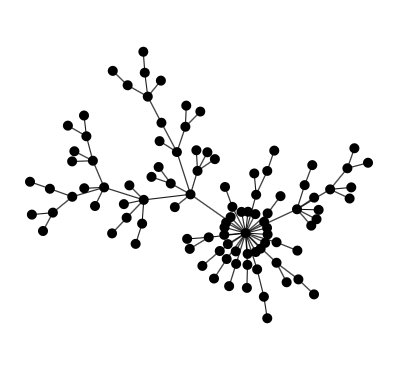Introduction
In the complex realm of decision-making, the mental model of Preferential Attachment emerges as a significant force. Rooted in human psychology, this concept suggests that individuals tend to favor options that have already gained popularity or resources. Preferential Attachment operates on the principle that the rich get richer and the popular get more popular. Understanding this model can shed light on how our choices and preferences are influenced by the perceived popularity or success of certain options. By recognizing the prevalence of Preferential Attachment in our daily lives, we can make more informed decisions that align with our true best interests.
The Psychological Anchoring of Preferential Attachment
Preferential Attachment is deeply anchored in human psychology. As social beings, we are wired to seek social validation and acceptance. We often rely on social cues, such as the choices and behaviors of others, to guide our own decision-making processes. The tendency to align with popular options arises from a desire for conformity, a fear of missing out, and the belief that popularity is indicative of quality or value. This bias can have profound implications for our personal lives, business endeavors, and public policy-making.
Examples of Preferential Attachment
Personal Life Decisions: Imagine a person deciding on a restaurant for dinner. They choose a highly rated and busy restaurant based on its popularity and positive reviews, assuming it must be the best choice. However, unbeknownst to them, their decision is influenced by the Preferential Attachment bias. By blindly following the crowd, they may miss out on exploring other hidden gems that better suit their personal preferences or dietary requirements.
Business Scenarios: In the business world, the Preferential Attachment bias can impact product and service choices. Consider a company that decides to invest heavily in advertising and promoting a product simply because it is already popular in the market. This decision may neglect other potentially innovative and superior products that are less known but could offer better value to customers. By succumbing to Preferential Attachment, the company may miss out on opportunities for growth and innovation.
Public Policy-Making: Preferential Attachment also manifests in the realm of public policy. Decision-makers may be inclined to support policies or initiatives that have gained popular support or are championed by influential figures. This bias can undermine objective analysis and hinder the exploration of alternative solutions that may better serve the public interest. By falling prey to Preferential Attachment, policymakers may disregard the long-term consequences and fail to address critical issues effectively.
Mental Biases and Psychological Underpinnings
Preferential Attachment is closely intertwined with several cognitive biases that shape our decision-making processes. One such bias is the bandwagon effect, where individuals align their choices with the preferences of the majority, assuming that popular choices must be correct. Additionally, the availability heuristic contributes to Preferential Attachment by making us more likely to favor options that are easily accessible or widely publicized.
Another underlying psychological factor is the need for social proof. Humans have a natural inclination to trust the choices and actions of others as a way to validate their own decisions. This desire for social validation can lead us to adopt popular options without thoroughly evaluating their suitability or alignment with our own values and preferences.
Identifying and Avoiding Preferential Attachment
To avoid falling victim to Preferential Attachment, consider the following strategies:
Self-Reflection: Take the time to reflect on your own preferences and values before making decisions. Evaluate options based on their merits, rather than relying solely on their popularity or the choices of others.
Diverse Perspectives: Seek out diverse opinions and perspectives to gain a more comprehensive understanding of the available options. Engage in critical thinking and weigh the pros and cons of each choice, considering factors beyond their current popularity.
Independent Evaluation: Conduct your own research and analysis to assess the quality, value, and suitability of different options. Be cautious of relying solely on external opinions or popular trends when making important decisions.
Self-Awareness: Develop awareness of your own biases, including the tendency to follow popular choices. Regularly question your motivations and critically examine whether your decisions are influenced by Preferential Attachment.
Conclusion
Preferential Attachment is a powerful mental model that shapes our decision-making processes. By recognizing its psychological underpinnings and prevalence in our lives, we can mitigate the risk of making irrational choices that do not align with our best interests. By fostering self-awareness, seeking diverse perspectives, and independently evaluating options, we can avoid succumbing to the influence of popularity and make decisions that truly reflect our values and objectives. Let us be mindful of the implications of Preferential Attachment and actively work towards objective decision-making to lead more fulfilling and authentic lives.
